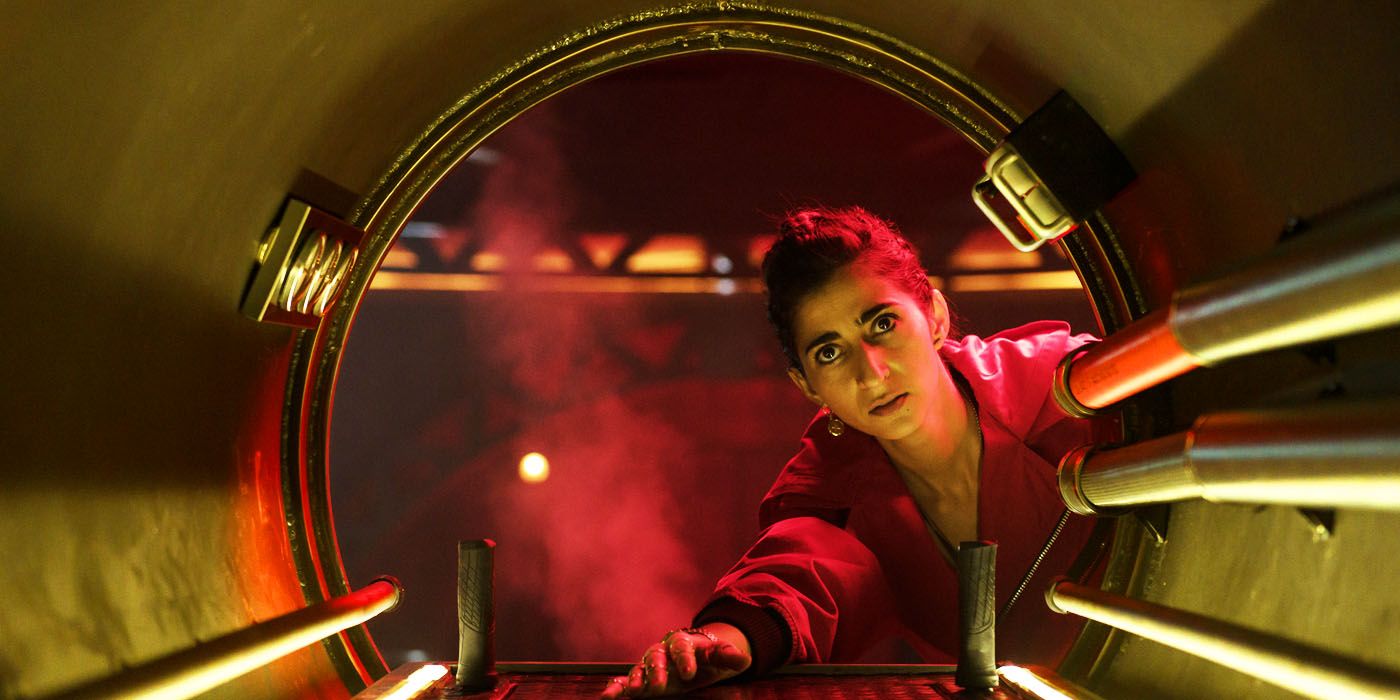
In Money Heist season 3, the crew are faced with a unique challenge: breaking into a vault full of gold, 48 meters underground, which will begin to flood with water as soon as they touch the door. It might seem like a work of fiction created for the outlandish crime series, but the Bank of Spain's flooding vault is real - and the real version is even more dramatic.
After successfully escaping with almost a billion Euros in untraceable bills in Money Heist season 1 and 2's Royal Mint heist, the gang teamed up again in season 3 after Rio was captured by Interpol. The Professor brings out a plan masterminded by Berlin that involves breaking into the Bank of Spain and stealing 90 tons of gold from its most highly protected vault. Thanks to the leadership of Nairobi and the welding skills of Bogotá they manage to pull it off by cutting a hole in the door and attaching an antechamber to it, so they can enter the flooded vault without actually opening the door. This elaborate plan does seem like it was created especially for the series, but the fact the flood door does actually exist gives Money Heist a semblance of realism, while also making the attempts to escape from the vault all the more engaging with high stakes.
Breaking into the real vault in the Bank of Spain is considerably more challenging than it is in the show. For starters, there's not just one steel door to get through, but three. As noted by Bloomberg in a breakdown of the vault's security measures, the fit of the doors is so tight that even a piece of fluff will prevent them from sealing. The steel is not stainless, and therefore must have a constantly maintained layer of Vaseline to prevent rust from forming. To open each one of these doors, two high-ranking Bank of Spain employees must simultaneously enter their keys and a code. It's unknown exactly how much gold is actually inside the vault, which contains not only ingots but also old coins from as far back as the 12th century.

The elevator shaft leading 35 meters down to the vault is protected by the largest of the three steel doors. The second door is where the danger of drowning comes in. It's in an antechamber with a retractable drawbridge (a detail that was left out of Money Heist). If the security system is activated that chamber will flood with water - but not just any water. The vault shares its water source with the most famous fountain in Madrid, la Fuente de Cibeles, which was first constructed in 1782. The pipes leading to the vault chamber are connected to the fountain. The Bank of Spain itself is massive and, though some of the gold inside the vault is centuries old, the vault itself was completed in the 1930s.
If you make it through the first steel door and manage not to drown while getting through the second one, you're still not done. Beyond the second door is another chamber with another 13-ton steel door. Beyond that, there are almost certainly more security measures known only to higher-ups at the Bank of Spain. With all the modern technology available it might sound very old-school to have a nation's gold reserves hidden behind a booby-trapped room, but the prospect of even trying to break in is daunting enough that there's never been an attempt to rob it in real life. That's where Money Heist takes its creative liberties, seeing the characters plotting to enter the impenetrable vault.
The heist can be compared with National Treasure's, in which Nicholas Cage's character was able to break into an underground vault to steal America's Declaration of Independence. Although the Bank of Spain's highly secured vault is much harder for the characters of Money Heist to break into. Heists in movies and TV shows are often focused on hacking, which is more realistic in the modern world but not quite as exciting. It's easy to see why Money Heist's writers were inspired by the Bank of Spain's legendary flooding vault. Try to pull off this heist in real life, however, and you'll find yourself facing a few extra obstacles.
from ScreenRant - Feed https://ift.tt/2EEOyZ2


0 Comments